If you like history and archeology, Antalya is an ideal destination for you.
If you like paradisiacal beaches, Antalya is also an ideal destination for you.
And the same goes if you like nature, gastronomy, sea navigation… As you can see, Antalya has a wide and varied range, and of the highest quality..
Por ello, viajar hasta esta ciudad es una etapa fundamental en muchos de nuestros circuitos por Turquía.
En esta página te damos las claves si tienes pensado visitar Antalya en el futuro.
Antalya is located on a wide and beautiful gulf of the gulf of the Turquoise CoastThe city is located in the Mediterranean Sea, in the south of Anatolia.
Being the main city of the area, this gulf takes its name, and is in turn the capital of the province of the same name.
Its population exceeds 1.2 million inhabitants.
These are the distances from other major cities in Turkey:
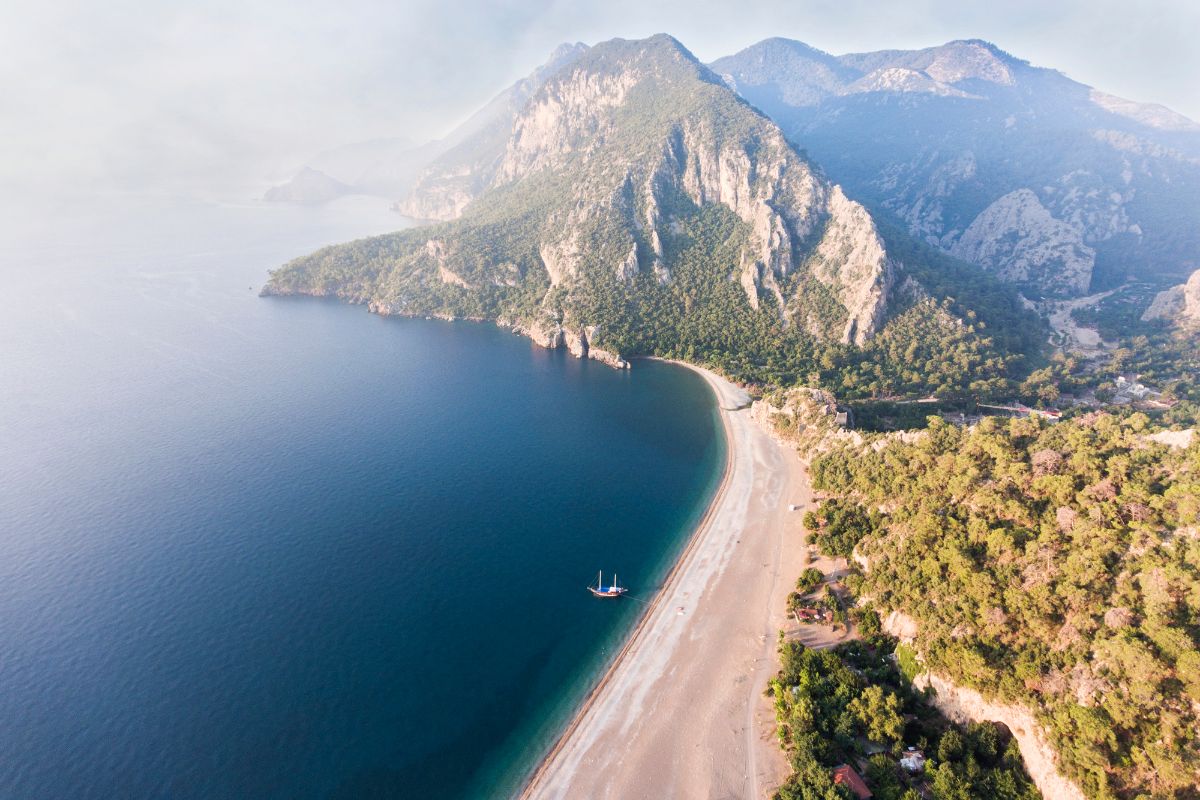
Antalya’s climate is similar to that of other nearby cities in the Mediterranean and the Turkish Aegean.
In other words, mild winterswith nighttime lows that do not usually fall below 5ºC. 5ºC and daytime highs around 15ºC. 15ºC.
Es en esta estación invernal cuando se concentran las lluvias (de noviembre a marzo), cuando suele haber unos 12 días lluviosos al mes.
On the other hand, the summer is very hotwith nighttime minimums that exceed 20ºC and daytime highs of over 35ºC. 35ºC.
Por ello, la temporada alta se da desde mayo hasta agosto, momento en el que los viajeros extranjeros llegan en masa para disfrutar de sus playas y su mar.
One of the reasons why millions of tourists come to Antalya every year is precisely its easy accessibility.
Here you can check how you can access the city of Antalya from other countries or Turkish cities.
Antalya has a large international airport just 10 km from the city: Antalya Airport (IATA code: AYT). 10 km from the city: Antalya airport (IATA code: AYT) is one of the busiest airports in the city. is one of the busiest, as the list of destinations with direct flights is very extensive, covering several continents:
But of course, it is not only international flights that arrive here, but also domestic flights. domestic flightsAdana, Elazığ, Hatay, Istanbul-Sabiha Gökçen, Izmir, Kayseri, Trebizond or Diyarbakır.
There are four major road axes vehicles can reach Antalya on four main roads:
And these are the times that usually take to get to Antalya from the main cities of Turkey:
Antalya has a large bus stationlocated about 4 km north of the center.
Direct routes arrive here from the main cities in the country, with one or more daily frequencies.
Destaca Estambul, con una treintena de autobuses programados cada día, pero también Ankara, Denizli y Konya, con más de una docena.
Otros destinos conectados con esta estación son Adana, Alanya, Çanakkale, Göreme (Capadocia), Esmirna, Kas, Fethiye o Marmaris.
Unfortunately, Antalya does not have a train stationThe Antalya-Konya-Kayseri (Cappadocia) high-speed rail line was in the pipeline at the time of writing (March 2024).
However, at the time of writing (March 2024), the Antalya-Konya-Kayseri (Cappadocia) high-speed line was in the pipeline, which would integrate Antalya even better into the tourist circuits in Turkey.
Antalya has a large large port for cruise ships located about 10 km from the city center.
However, only this type of boat operates here, with a closed route.
On the other hand, has no regular ferry lines to/from other Turkish or foreign cities. to/from other Turkish or foreign cities.
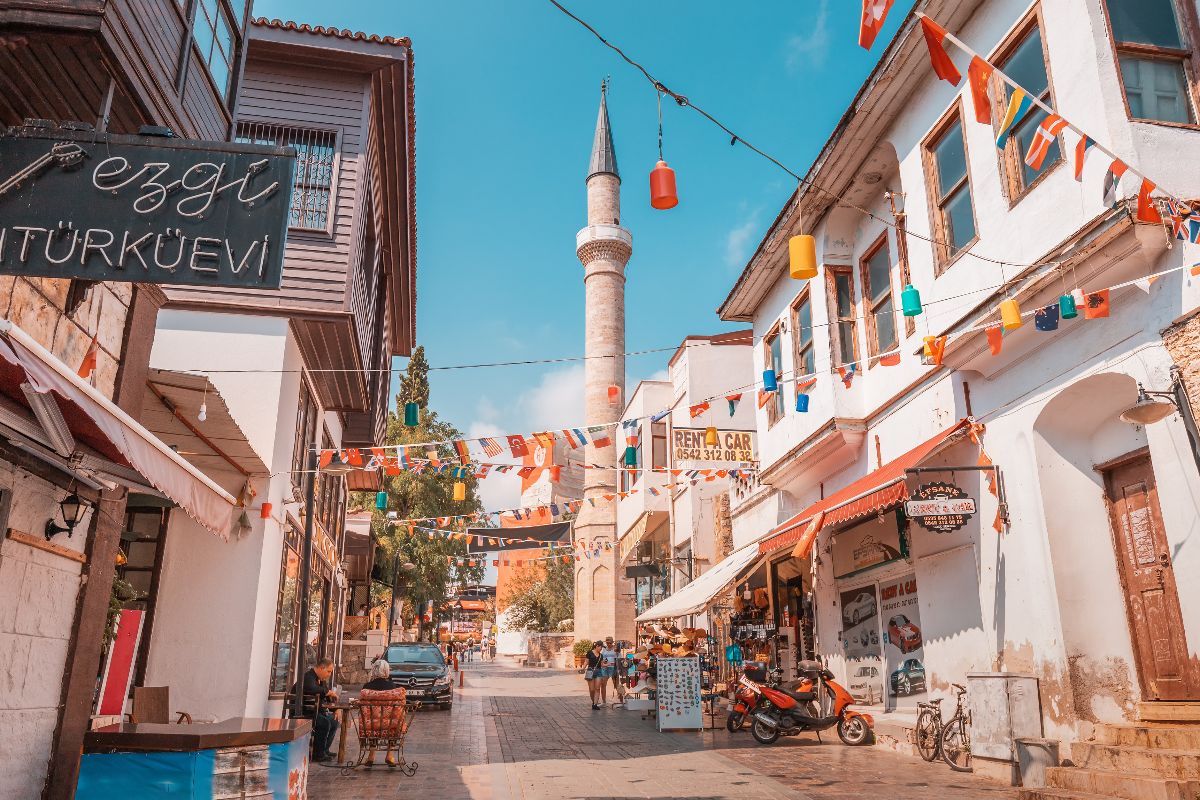
The founding of Antalya dates back to the 2nd century B.C., by Attalus II.King of Pergamon, in northwestern Anatolia, who intended to create a base for his naval fleet on the Mediterranean coast.
And from there it derives its name.
A few decades later it came under Roman rule (133 B.C.), thus beginning an era of great prosperity.
It is no coincidence that Paul of Tarsus and Barnabas the apostle passed through here on their evangelizing journeys during the first century A.D., or that the emperor Hadrian himself visited the city in 130 A.D. For the latter occasion the so-called Hadrian’s Arch was built, still standing today.
The Byzantine EmpireEmpire, a continuation in part of Roman civilization, maintained Antalya as a strategic enclave on the Mediterranean, but over time it became increasingly isolated: in the 12th century it was only accessible by sea, so it was inevitable that in the following century it would fall under Seljuk rule. Seljuk ruleThe Seljuqs, who embellished the city with their famous fluted minaret (Yivli Minare), a true symbol of the city for its uniqueness.
In 1391 it was conquered by their ‘heirs’, the Ottomans. OttomansIts growth was progressive until it surpassed the perimeter of its own walls and expanded the capacity of its port.
But this growth stopped and it did not experience a great revival in the 19th century, since it did not benefit from the development of the railroad, so that only its port remained as the main transport infrastructure, relegating the city to a second place.
Already in the 20th century, it experienced the arrival of Turks from other regions (Caucasus and Balkans) due to political and economic instability.
And when the Greco-Turkish War broke out after the fall of the Ottoman Empire with the end of World War I, it experienced a fleeting period of Italian dominationuntil 1921 when it was liberated by Atatürk’s army.
But in spite of the new republic led by this military man, the father of the Turkish homeland, Antalya had to wait until the end of the century to witness the ambitious development projects that have made it the great city it is today, thanks in large measure to the boosting tourism.
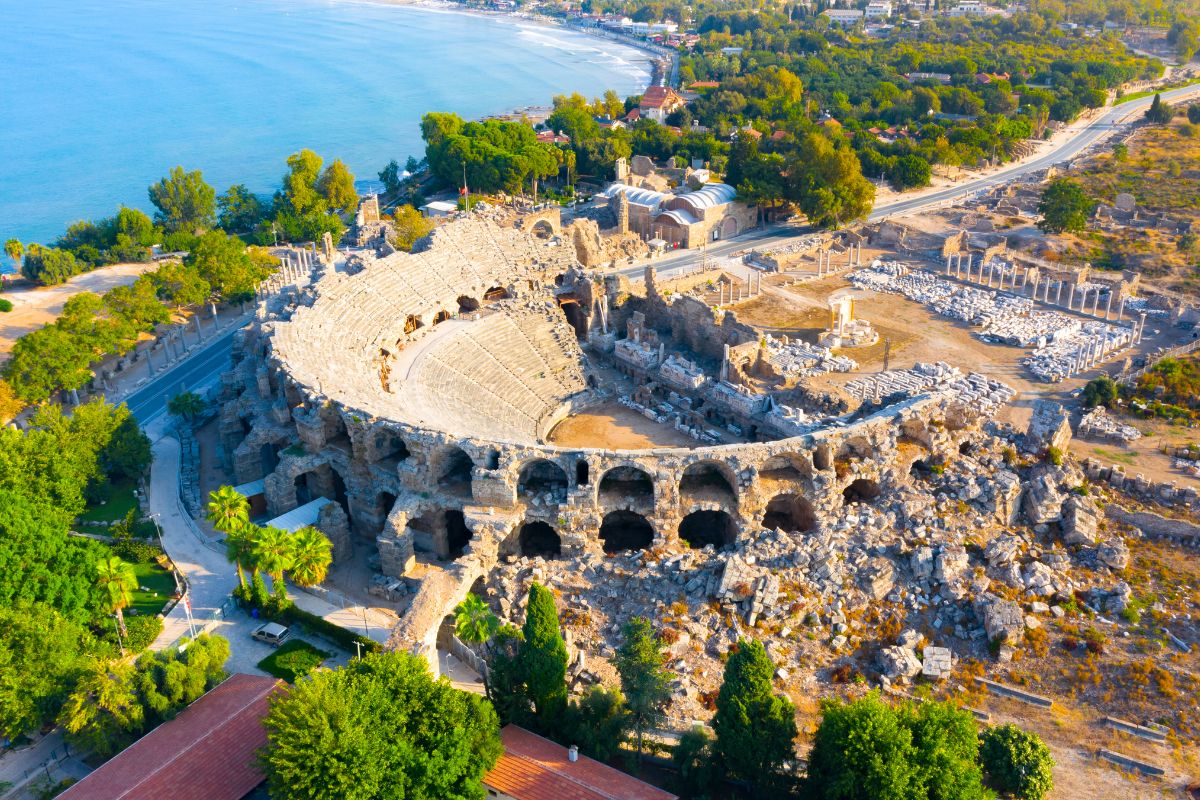
From a historical and monumental point of view, the main attractions are concentrated in the old town, called Kaleiçi: it is the historic district and origin of the city, where Roman vestiges intermingle with Seljuk and Ottoman religious and military constructions, as well as narrow pedestrian streets between the ancient walls, which are perfect for boutique hotels and quality restaurants.
Strolling and getting lost here is an attraction in itself, and depending on your route, you’ll probably end up passing through:
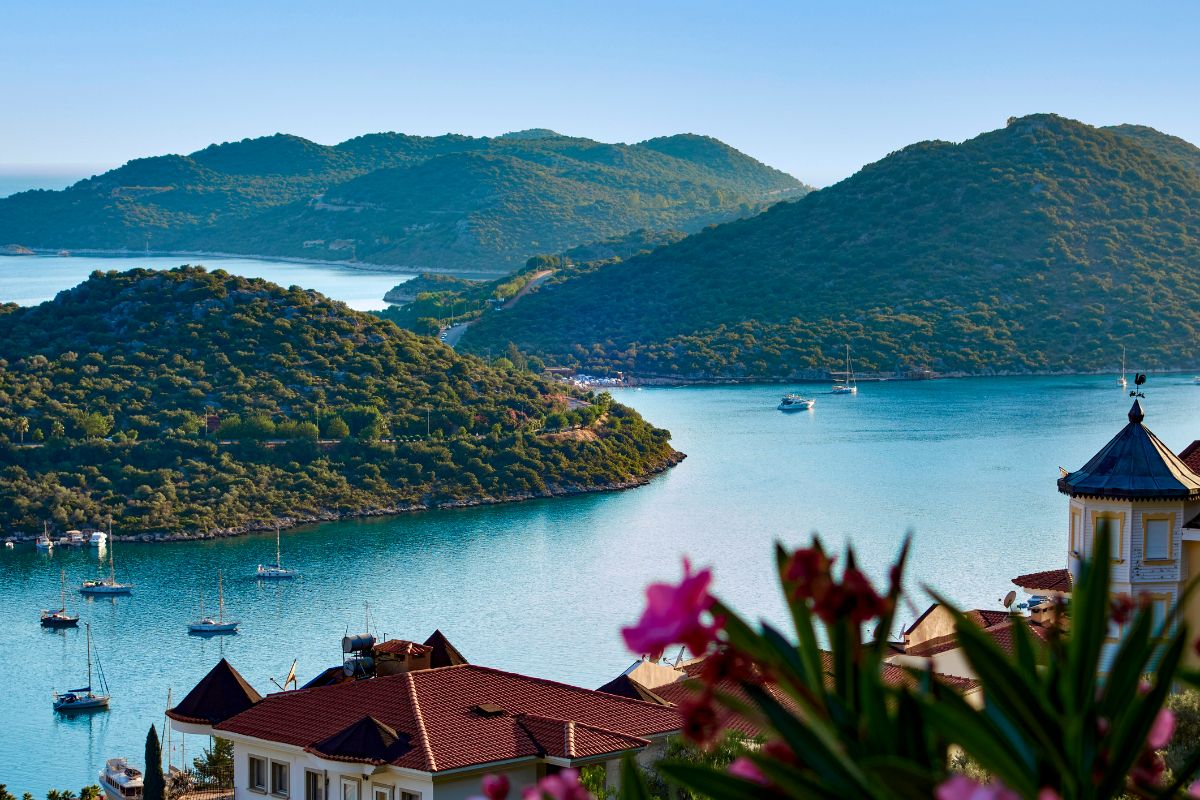
Antalya boasts a good list of museums and museums and monuments to visitThe most important of them are the following: the most important of them all, so tourists who love history and culture have in them their best plan.
These are the most outstanding:
One of the advantages of Antalya is that, without leaving the city, you can take a dip in the sea, since it has extensive beaches.
Dado su gran tamaño, se recomienda ir en taxi o transporte público.
Por ejemplo, a la playa de Konyaalti (al oeste del centro) y a la de Lara (al este).
For those who are also looking for relaxation but in a more intimate atmosphere, there is nothing better than to go to one of its hammams or Turkish baths. hammams or Turkish bathsThe Sefa, which has its origins in the Seljuk baths (13th century).
It has pools with water at different temperatures, as well as massage and exfoliation services.
Finally, Antalya is a good family destination. family destinationThe most important of these is not only for its extensive beaches, but also for the children’s options that are offered.
The big star in this regard is the state-of-the-art AquariumThe underwater tunnel, with a spectacular underwater tunnel to see sharks and other species up close but behind glass.
In addition, activities such as feeding stingrays are organized.
Another interesting proposal is the SandlandAnother interesting proposal is the Sandland, an enclosure where great creations of beach sand are exhibited, from famous monuments such as the Colosseum or the Petra Treasure to human sculptures of illustrious or imaginary characters.
And if all this isn’t enough, Antalya also has a modest amusement park called Aktur Parkwith a big Ferris wheel, bumper cars and spaces decorated in the form of a theme park.
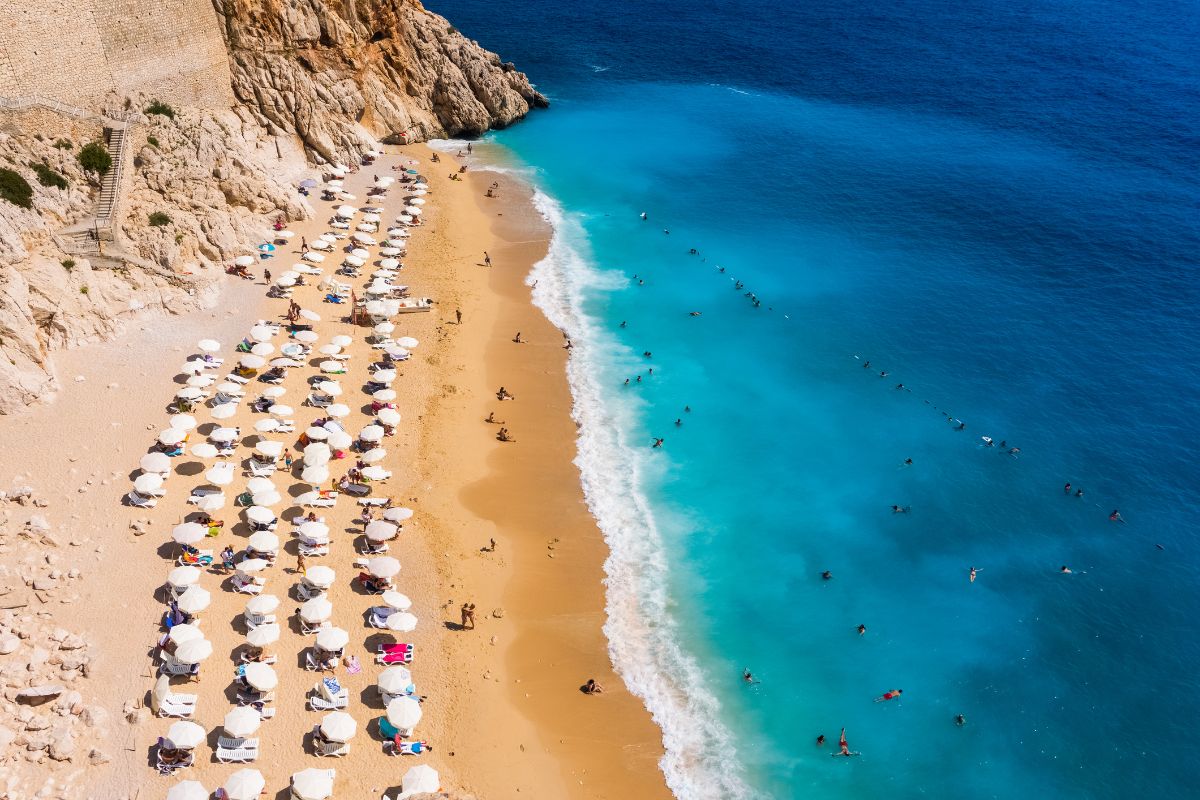
To collect tourist information on siteyou can go to the tourist office, which is located at Cumhuriyet Caddesinear the northern entrance to Kaleiçi.
Maps and brochures in different languages are available.
Antalya is one of the cities with the best public transportation in Turkey.
Although it does not have a Metro, it does have a efficient and comfortable streetcar (AntRay) that surrounds the Kaleiçi district and also reaches other strategic points, such as the beaches, the airport and even the bus station.
For those who prefer private transport, there are numerous cabs available throughout the city, which cover the central streets but also the farthest beaches.








